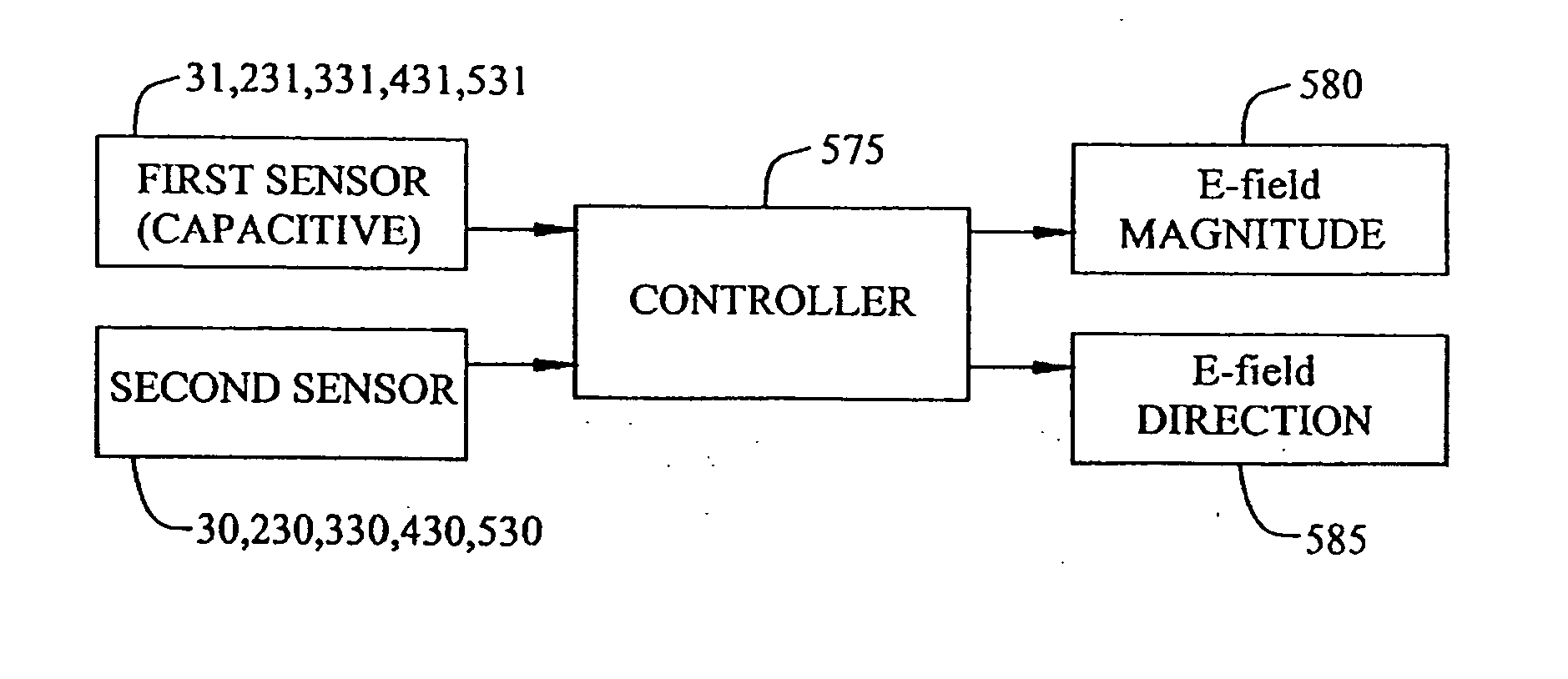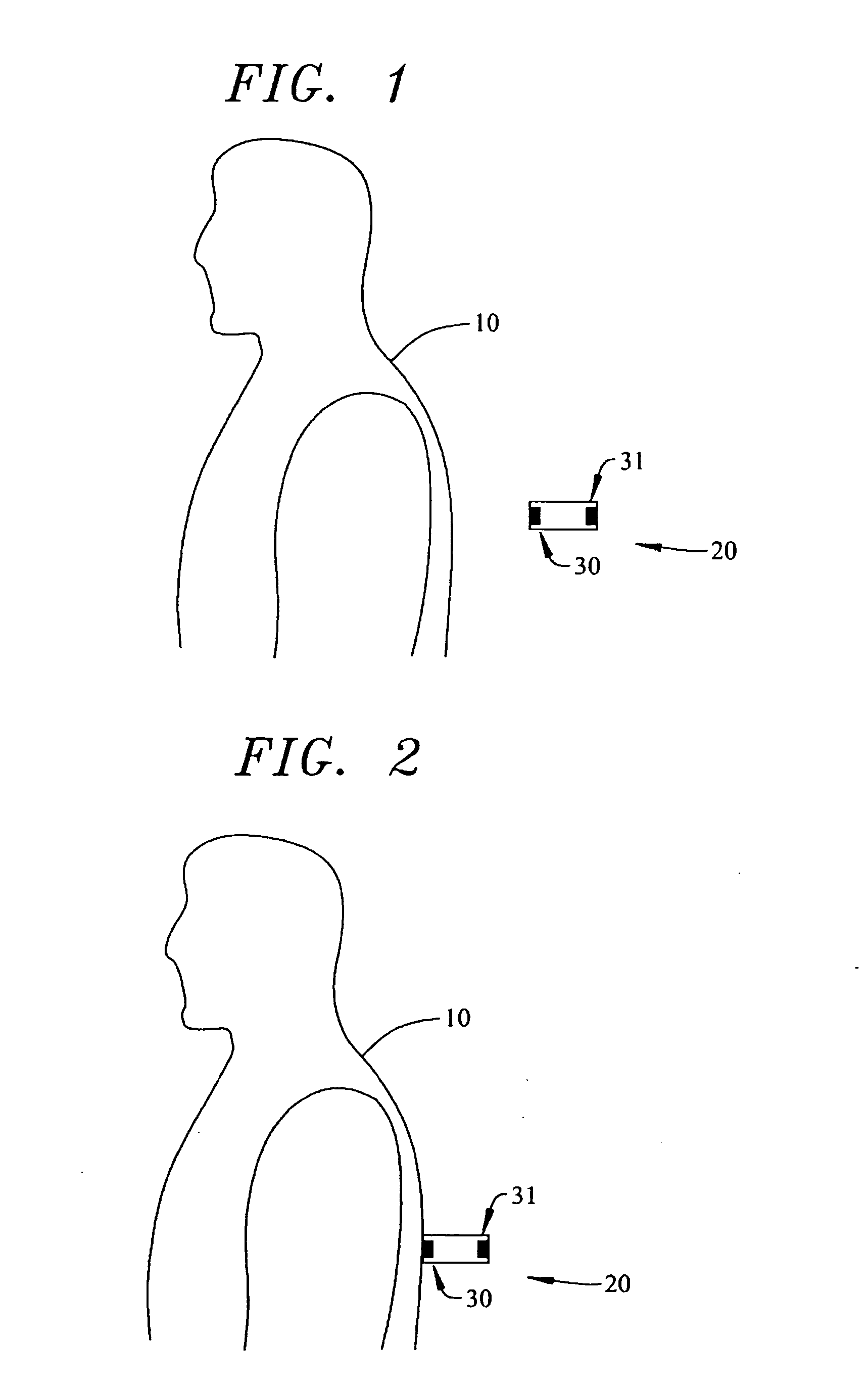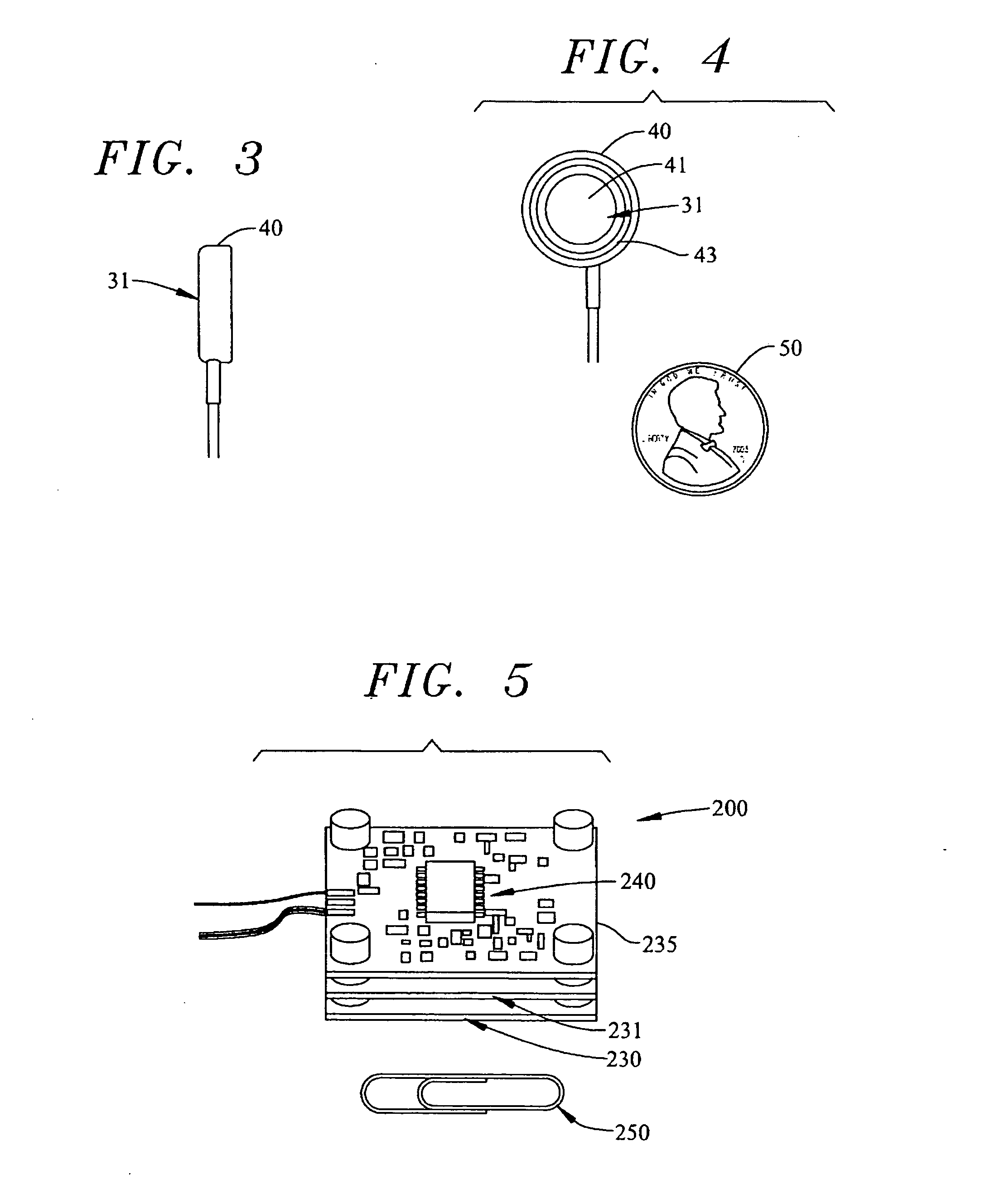Sensor system for measurement of one or more vector components of an electric field
a technology of electric field and sensor system, applied in the field of measuring one or more vectors, can solve the problems of inconvenient use, special design of arrangements to reduce sensitivity, and additional difficulties in measuring a field, and achieve the effect of improving the information needed
- Summary
- Abstract
- Description
- Claims
- Application Information
AI Technical Summary
Benefits of technology
Problems solved by technology
Method used
Image
Examples
Embodiment Construction
[0026] Initially, it is important to note that an object placed in an electric field rises to the potential associated with the field, at least at its geometric center. FIG. 1 illustrates the invention used in connection with measuring an electric field produced outside of a human body 10, such as the heart (not shown) of human body 10. To sense the electric field in accordance with the invention, a sensor system, generally indicated at 20, is positioned adjacent to body 10. As shown, sensor system 20 includes a plurality of sensors, two of which are indicated at 30 and 31. Sensors 30 and 31 are fixed a predetermined distance apart and employed to measure electric potentials associated with body 10. The invention is, at least partially, predicated on the fact that the capacitance of an object is dominated by its mutual capacitance to objects in close proximity, with the capacitance reverting to a free-space capacitance, as the object is isolated. For an object of maximum size of abo...
PUM
 Login to View More
Login to View More Abstract
Description
Claims
Application Information
 Login to View More
Login to View More - R&D
- Intellectual Property
- Life Sciences
- Materials
- Tech Scout
- Unparalleled Data Quality
- Higher Quality Content
- 60% Fewer Hallucinations
Browse by: Latest US Patents, China's latest patents, Technical Efficacy Thesaurus, Application Domain, Technology Topic, Popular Technical Reports.
© 2025 PatSnap. All rights reserved.Legal|Privacy policy|Modern Slavery Act Transparency Statement|Sitemap|About US| Contact US: help@patsnap.com



